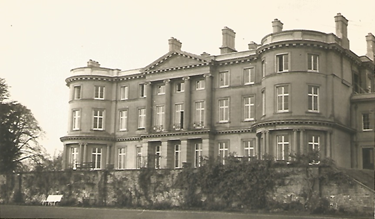Gwent’s Unknown Warrior- Little Sir Thomas Morgan, the Great Soldier
Gwent’s
Unknown Warrior - Little Sir Thomas Morgan, the Great Soldier
by Jeremy Knight
Portrait -an engraving from a portrait by C.W. Bampfylde
by Jeremy Knight
Portrait -an engraving from a portrait by C.W. Bampfylde
Arguably the
greatest soldier that Monmouthshire has produced, Major General Sir Thomas
Morgan (1604-1679) is largely forgotten in his native county, partly because,
in the opinion of many, he fought on the wrong side. Accounts of the epic siege
of Raglan Castle focus, for several reasons, on its defence by the Marquis of
Worcester and ignore the embarrassing fact that until the arrival of Sir Thomas
Fairfax with the New Model Army (the first time that the red coats that became
synonymous with the British army were seen in the county), the siege was
conducted by two Monmouthshire gentlemen, Thomas Morgan of Llangattock Lingoed
and Sir Trevor Williams of Llangybi. Yet Morgan had a distinguished military
career in the Thirty Years War and under the Commonwealth, went on to play a
significant part in the restoration of Charles II and even had an incidental
role in the creation of the Coldstream Guards.
John Aubrey’s
statement that Morgan was ‘of meane Parentage in Monmouthshire’ is misleading.
He was the eldest son of Lewis Morgan, of Old Court, Llangattock Lingoed, a
gentry and landowning family. Like many distinguished soldiers he was of very
short stature. As a boy of 16, someone gave him a letter of introduction to a
relative who was fighting for the Protestant cause in the Thirty Years War.
‘What’ said his kinsman ‘has my cousin recommended a Rattoon to me’. Aubrey’s anecdote may have been another
exaggeration, but Morgan was understandably offended and went off to fight in
Sir Horace Vere’s protestant volunteers and under Bernard of Weimar, where he
served alongside Thomas Fairfax and George Monck, future parliamentary
commanders who were to play major roles in his career. Networking is not a
modern invention . In 1631 he won distinction during the decisive Dutch naval
victory of the Slaak, when, at the head of 2,000 English and Scots volunteers
he prevented the Spanish from landing.
On the
outbreak of war in 1642 he returned home and fought under Sir Thomas Fairfax in
northern England. In 1645 he was given command of the Gloucester garrison. With
the help of two former royalists, Sir Trevor Williams and Robert Kyrle, he went
on to take Monmouth and Chepstow for Parliament and to besiege Raglan.
Under Cromwell, he became second in command
in the English army fighting in Flanders as allies of the French against the
Spanish. In 1658, after the Battle of the Dunes outside Dunkirk (the same Dunes from which a later British
Expeditionary Force was evacuated in 1940) the great French soldier Marshal
Turenne and Cardinal Mazarin ‘had a great mind to see this famous warrior’
expecting ‘ an Achillean or gigantique person’, Instead, they found ‘a little
man….sitting in a hutte of Turves, with his fellow soldiers, smoking a pipe’.
According to Aubrey ‘He spake Welch, English, French, High Dutch and Low Dutch,
never a one well ’- perhaps another Aubrey canard. On his return to England,
Morgan was knighted.
Morgan became second in command of the
English army in Scotland under General George Monck. By 1660 Monck was working
for the restoration of Charles II. Leaving Morgan in command in Edinburgh, Monck
marched south into England over Coldstream Bridge in Northumberland (hence the
Coldstream Guards) and visited Thomas Fairfax at his home at Nun Monkton in
Yorkshire to get him on side, before marching to London to remove what was left
of the Rump Parliament.
Morgan
was rewarded for his part in the restoration by a Baronetcy and purchased an
estate at Kinnersley in western Herefordshire.
This presumably included the magnificent Elizabethan house Kinnersley
Castle, built by Roger Vaughan between 1585 and 1601. If so, he had little time
to enjoy his new house, for in 1665 Charles II made him Governor of Jersey. This
was far from being a retirement job. There were fears of a French invasion. Morgan
improved the fortifications and re-organised the garrison. He died in post in 1679.
That fine historian Arthur Dodd paid him a tribute- ‘ A man of short stature,
he ranks high among the soldiers of the age, with a reputation for chivalrous
treatment of his foes’
Notes
There are numerous editions of Aubrey’s Brief
Lives. Including the Folio Society edition of 1957 and the Penguin Classics
edition of 1987, the latter with a lengthy and entertaining introduction (‘ The
Life and Times of John Aubrey’) by Oliver Lawson Dick.
On Kinnersley see Nikolaus Pevsner Buildings of
England: Herefordshire 1963, 211-212. The Lady Morgan, whose memorial of
1764 is in the church may be a descendant.
Dodd’s tribute is from Dictionary of Welsh
Biography (retrieved 3 June 2020)



